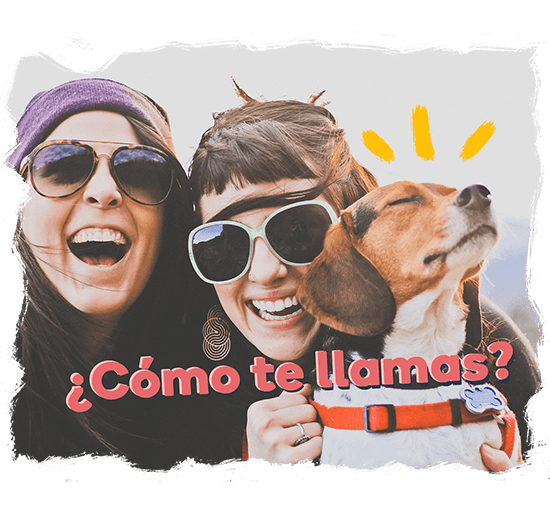When you want to learn Spanish, you should start with some basic conversational phrases that can help you get by in most situations. But with so much information about learning Spanish for beginners, it’s hard to know where to start. Read on for more info on learning conversational Spanish!
Fun fact: Spanish is the official language of over 20 countries with over 400 million native speakers (second only to Chinese). It’s a useful language to learn as it can open up doors in a range of places! We’re here to remind you that language learning doesn’t have to seem like some impossible feat. Actually, learning conversational Spanish is easy. Why? We’ll tell you.
First and foremost, you don’t need to worry so much about pronunciation, as it’s a phonetic language, which means you speak it exactly like how it’s written. Secondly, it can give you access to other cultures, such as Latin American culture (more on this later!) Of course, you want to progress quickly with learning Spanish, but first you need to master some conversational basics.
Why learn conversational Spanish?
There are many reasons to learn conversational Spanish. The main reason is to create connections with others. Being able to communicate and connect with someone in their native language is amazing! You get to experience their culture and get to know them more. When you learn conversational Spanish, you also have a chance to strengthen your career prospects (you never know when it could come in handy!), gain a different perspective of the world and do some brain training all at the same time.
It’s important to note, though, that fluency doesn’t come overnight! To speak Spanish fluently, you need to proactively make time to learn and stick with it for a long period of time. Of course, you want those interpersonal connections as quickly as possible to feel like you’re succeeding in having a decent conversation! But it does take time. When you’re just starting out, it’s more fun to make someone laugh with a silly mistake than to correctly use the imperfect subjunctive - we promise!
Having said that, there are a few quick conversational phrases you can pick up easily. These are Castilian Spanish words. Scroll down for some useful Mexican Spanish phrases!
I only speak a bit of Spanish / solo hablo un poco de español
|
Hi/Hello / Hola
|
How are you? / Cómo estás
|
|
What’s your name? / Cómo te llamas
|
My name is / Me llamo
|
|
Thank you / Gracias
|
Goodbye / Adiós
|
Then once you’ve got these simple Spanish sentences nailed, it’s time to head out and try them! You’ll need to put yourself out there. It might seem scary but try to forget about perfectionism. The best approach to learning conversational Spanish is “no hablo perfectamente, pero me hago entender!”, which means “I don’t speak perfectly, but I make myself understood!” Remember: everyone makes mistakes. That’s the best way to learn!
The best way to learn conversational Spanish
The best way to learn conversational Spanish is to practice! However, we don’t think you should go out and buy the first Spanish grammar book you can see, or sign yourself up for dull-as-ditchwater robotic online classes. Those things take time, money and a LOT of your patience. Learning Spanish should fit into your schedule, not the other way round! The key to learning conversational Spanish is to combine listening to native speakers with some key vocabulary in the form of some basic Spanish words. Add a couple of simple Spanish sentences and a few clever language hacks and you have a magic recipe for basic Spanish conversation.
Other Spanish learning tips
Our first tip would be to find something you enjoy. You won’t stick to learning if you’re bored by it. If you dislike reading, there’s no point in setting a learning goal to “buy Spanish books” and then poring over an old Spanish textbook from 1998 that you picked up in a charity shop because it was “a bargain” and you “could really do with learning some phrases”. Learning needs to be fun, because when something’s fun, it helps you learn better and retain more information.
If you prefer watching videos, why not try and discover a new Spanish Youtuber and immerse yourself in their content? You might feel like it’s a weird way to achieve your language learning goals, but hear us out: With fun activities and learning methods, your brain gets a hit of dopamine. This sends a trigger to your brain’s pleasure system, making you more inclined to carry on with your goals and ultimately achieve them!
Our second tip would be to learn practical phrases. Sure, it might not seem like the most exciting way to start but ‘practical’ Spanish is what you want to learn when you’re just beginning. Whether it’s greetings, conversation starters or how to say thank you, knowing these useful words and phrases will help you get along in almost any situation. Read our full list of recommended useful phrases here!
How to learn Mexican Spanish
Spanish has a lot of different variants, but the most popular is Mexican Spanish with a whopping 121 million speakers! Why should you learn Mexican Spanish? It can open your mind to a whole selection of different cultures and it’s similar to Castilian Spanish (with a few interesting variations!)
To help you out, we’ve selected a few words and phrases and translated them into their Mexican Spanish variations, so they’ll be super handy to also know when chatting with your Mexican friends!
NOTE: These are really casual and informal, so don’t use these in a workplace setting!
|
Hello / ¿Qué onda?/ Aló |
How are you / ¿Cómo te va? |
|
My name is / Me llamo (This is the same as Spanish and fine to use in any scenario) |
Where are you from? / De donde eres (This is the same as Spanish and fine to use in any scenario) |
|
Cool / Chido |
Goodbye / Ahí nos vemos/Bai |
Each of our official Mexican Spanish language courses is designed by a team of local language experts to teach you the language you need to have conversations in real-life situations. From finding your way around Mexico City to ordering tacos al pastor, shopping, greeting new friends or connecting with family, you’ll learn the language as it's used by native speakers in real life. Discover more inside our Mexican Spanish course!
Differences between Castilian and Latin American Spanish
Get ready for a super speedy history lesson: In 1492 Castilian Spanish became the Official Language of Spain. In the years following, Spanish explorers headed to the Americas and the Spanish language quickly became prevalent there, and evolved with the influence of the language spoken by natives in Latin America.
Although the differences between Castilian and Latin American Spanish can seem minor, you can listen out for little things that make it obvious.
The easiest way to tell the difference is by pronunciation. In Castilian Spanish, the letter “C” is pronounced with the “th” sound when it comes before the letters “e” or “i”. So for example, if you take the word “ciudad” (city), Castilian Spanish speakers would pronounce it “thi-you-dad” and Latin American Speakers would pronounce it “see-you-dad” The letter Z is also pronounced with the “th” sound. Zapatos (shoes) is pronounced “sa-pa-tos” in Latin American Spanish and “tha-pa-tos” in Castilian. Other differences include tenses, formal/informal sentence structures, idioms and slang.
Whichever you choose to learn, you’ll be sure to enrich your world by learning some conversational Spanish vocabulary. If you found this useful, find out more about learning Spanish (or Mexican Spanish) now!









